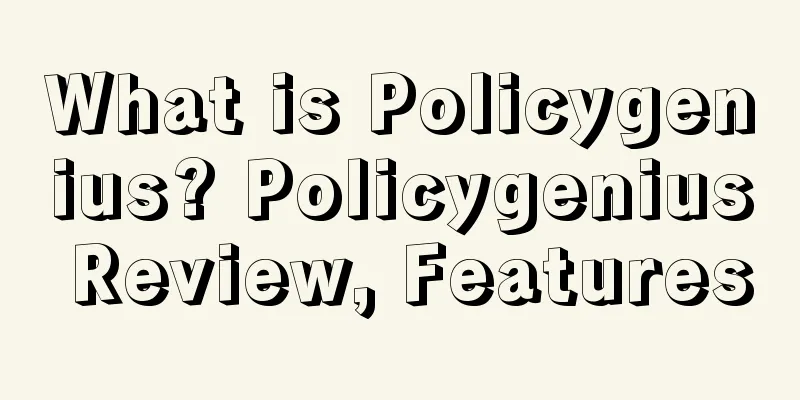What is CPSC? CPSC Review, Features

|
CPSC is an important consumer protection agency in the United States. It is the abbreviation of Consumer Product Safety Commission. Its responsibility is to protect the interests of consumers and maintain personal and family safety by reducing the risk of injury and death from consumer products.
Introduction to CPSC Certification CPSC is a federal government agency in the United States. Its main responsibility is to develop standards and regulations for the safety of consumer products and supervise their implementation. The CPSC currently manages 15,000 different products in its catalog. CPSC rules are used to collect product safety data, remind customers of product dangers, and ways to reduce hazards. CPSC rules are used to deal with electronic vibrations, fires, and other safety hazards. CPSC rules also apply to products that are involved in lawsuits and fail to implement safety guidelines, causing injuries or deaths. Manufacturers, importers, distributors, and retailers must make written reports on products that are found to be unsafe, and only products that have obtained safety marks are allowed to enter the market.
Certification Features 1. CPSC manages more than 15,000 products, mainly household appliances, children's toys, fireworks and other consumer products for home, sports, entertainment and school. However, vehicles, tires, ships, weapons, alcohol, tobacco, food, medicines, cosmetics, pesticides and medical devices are not within its jurisdiction. 2. Taking children's toys as an example, the inspection items include: flame retardancy, disassembly, etc., to assess the existing or potential dangers and hazards of children's toys to prevent children from being injured. This inspection is not to embarrass the company, but to be responsible to consumers; it does not inspect the production quality of the company, but the safety of the product during use. 3. The standards and regulations formulated by CPSC are very detailed. For example, the safe use of refrigerators takes into account whether children can be safely called out if they climb in; the safe use of lighters takes into account whether children under 5 years old can be lit and whether they can burn children. Safety issues such as motor vehicles and products for the disabled are not within its management scope and are handled by other specialized agencies.
Main content 1. Establish unified mandatory national standards across the United States. 2. Further regulate toys containing lead. 3. Affix traceability labels to toys. 4. Convert the voluntary standard ASTM F963 into a mandatory standard. 5. Implement mandatory third-party testing on certain children's products and control six types of phthalates in toys.
Scope of application CPSC rules are a way to collect product safety data, alert customers to product hazards, and reduce harm. CPSC rules address electrical shock, fire, and other safety hazards. CPSC rules also apply to products that are involved in lawsuits or fail to implement safety guidelines, resulting in injury or death. Manufacturers, importers, distributors, and retailers must make written reports on products that are found to be unsafe, and only products that have obtained safety marks are allowed to enter the market.
Management tools CPSC management methods are mainly: ·fine; Television media exposure; If necessary, recall the defective products; Through legal procedures.
recall 1. Automatic recall, which means that manufacturers, importers, wholesalers or retailers take the initiative to recall products when they find that a recall is necessary. 2. Compulsory recall, which means that the relevant competent authority will take legal action or administrative measures to order a compulsory recall when it finds that a product recall is necessary.
Related bill content 1. CPSA CPSA is the abbreviation of the Consumer Product Safety Act, which was enacted in 1972 and is the protection regulation of the CPSC. It established the agency, explained its basic powers, and required the CPSC to establish standards that could reduce or eliminate the risk when it found any excessive risk of injury associated with any consumer product. It also allowed the CPSC to issue recalls for defective products (except for those products that are not under the jurisdiction of the CPSC). 2. FHSA FHSA (Federal Hazardous Substances Act) is the abbreviation of the Federal Hazardous Substances Act. This act requires that household products with certain hazards should be labeled with warnings to inform consumers of the potential dangers and instruct them on how to protect themselves when these dangers occur. Any toxic, corrosive, flammable, irritating products and products that can generate electricity through decay, heating or other reasons need to be warned on the label. If the product is likely to cause personal injury or disease in normal use and when touched by children, it should also be indicated on the label. 3. PPPA (Poison Prevention Packaging Act) PPPA is the abbreviation of the Hazardous Materials Packaging Act. This act came into effect in 1970 and requires some household appliances to have child-resistant packaging to prevent children from getting hurt. This packaging act requires that the design of the product should not only prevent children under the age of 5 from opening the product within a certain period of time, but also facilitate adults to open it normally. Considering that the elderly and disabled may also have difficulties in opening the packaging of such products, the act allows the product to appear on the counter of daily groceries in a non-standard size packaging, which should be affixed with a warning sign indicating that the product cannot be easily reached by children in the home. When prescribed by a doctor or the patient has special requirements, statutory prescription drugs do not need to use child-resistant packaging. 4. RSA (Refrigerator Safety Act) RSA is the abbreviation of "Refrigerator Safety Act". This law came into force in 1956. It requires that the mechanical structure of the product (usually magnetic latch) can ensure that the door can be opened from the inside under special circumstances. This special situation may occur when children play or climb into the refrigerator that has been abandoned or not stored carefully. In fact, many such refrigerators are still in use, and once they are left in a place where children can easily reach them, they will become very dangerous. 5. CPSIA On August 14, 2008, President Bush signed the Consumer Product Safety Improvement Act (CPSIA/HR4040) into law. This act is the most stringent consumer protection act since the establishment of the Consumer Product Safety Commission (CPSC) in 1972. In addition to stricter requirements on the lead content in children's products, the new act also sets new regulations on the content of harmful substances such as phthalates in toys and child care products. In addition, the act also requires the establishment of a public database on consumer product safety and requires that certain children's products must have a test report issued by an independent third-party laboratory approved by the Commission before being imported into the United States. CPSIA affects all industries related to the production, importation, and distribution of toys, clothing, and other children's products and care products in the United States. All manufacturers should ensure that their products comply with all regulations, bans, standards, or rules of the Act. Among the phthalates, except for DINP, DIDP, and DNOP, which are temporarily banned until the CHAP research report is released, whether to lift the ban or list them as permanently banned, DEHP, DBP, and BBP have been permanently banned. |
<<: What is Dingmai Academy? Dingmai Academy Review, Features
>>: What is the Community Mentor Program? Community Mentor Program Review, Features
Recommend
What is BaseLinker? BaseLinker Review, Features
BaseLinker is a functional integration platform th...
Walmart has a new policy, and the dropshipping model may be eliminated
Due to severe price involution, many Amazon selle...
Halloween orders plunged, and sales in many categories were sluggish
The Halloween " scare " is here. In Oct...
After being criticized wildly by netizens, is Temu no longer a popular commodity in the eyes of Americans?
However, similar to the public opinion environmen...
Amazon's advertising business grew by $15.73 billion as consumers' appeal surges
Data showed that Amazon's advertising busines...
Account blocking, layoffs, or looking for other options, NO! Cross-border e-commerce continues to grow
During this event, Venus Tang, Business Director ...
What is Rakuten & Rakuten Review
Rakuten, Inc. (English: Rakuten, Inc.; Japanese: ...
What is Video Spin Blaster? Video Spin Blaster Review, Features
Video Spin Blaster is a video promotion auxiliary...
What is Merama? Merama Review, Features
Originally from Mexico, Merama has become a stakeh...
Parcel volumes between UK and EU fall by more than 25% as paperless trade lags
Due to the aftermath of Brexit, barrier-free trad...
What is Canadian Tire Retail? Canadian Tire Retail Review, Features
Canadian Tire Retail is a subsidiary of Canadian T...
What is paypay? paypay Review, Features
PayPay is a mobile payment system in Japan that a...
What is Pricefy? Pricefy Review, Features
Pricefy is a store focused on helping retailers be...
Huge profit! A couple made tens of millions selling "pickle jar" sweatshirts
In this context, users often see advertisements f...
Hot sale! Amazon reveals list of the most popular gifts for 2021
As the peak season approaches, many sellers hope ...









